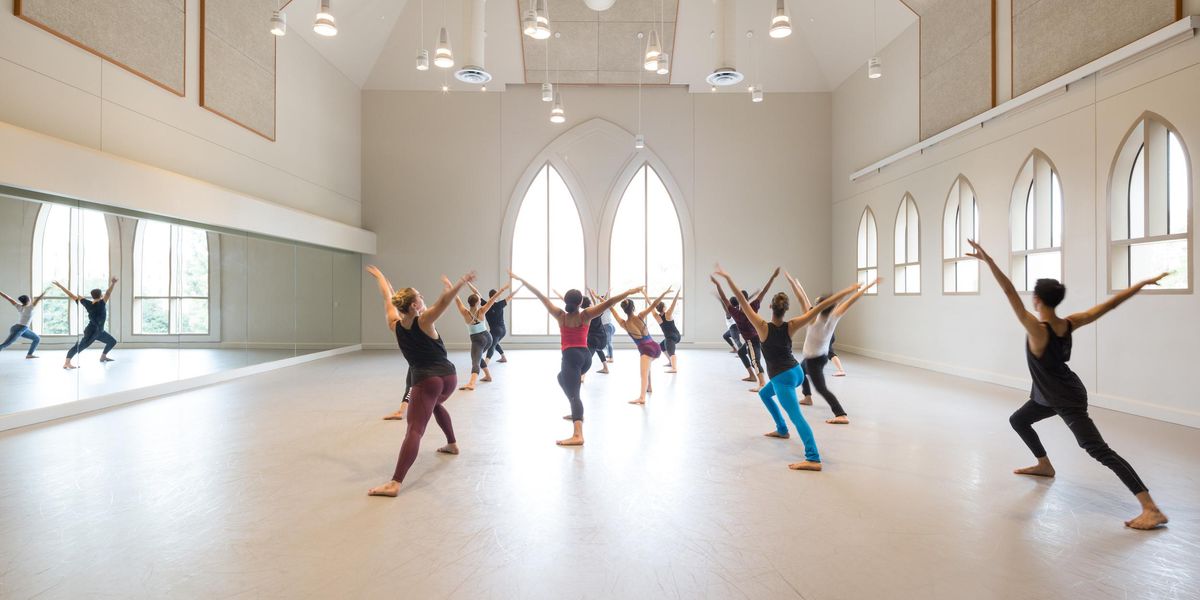Alonzo King LINES Ballet
The Joyce Theater, NYC
May 8–13, 2012
Performance reviewed: May 8
In Alonzo King’s vision for his San Francisco-based ensemble, ballet itself appears to be a body capable of uncommon, even freakish pliancy and distorted, roughed-up lyricism. It is ballet contradicting ballet at nearly every turn, not so subtly referencing the ground but often doom eager for it.
In Resin (2011)—set to a suite of spiritual and secular, traditional and contemporary, instrumental and a cappella music of the Sephardic diaspora—dancers frequently propel torsos outward and downward or sink into raffish pliés or tempt fate by stretching or thrusting a movement phrase past what might be its sensible end point. Feet flattened, or skimming as if on ice, draw attention to the floor, so that pointe work, coming in brief bursts, appears more functional than aesthetic: “I rise just to get to the next place.” A dancer might shoot her leg up to her ear, but she is just as likely to wind up with her rear jutting in our faces for no discernible reason. When dancers lift their partners or lock arms with them or slam into them, you feel the effort or the impact. I have rarely been more aware of—and fascinated by—the literal weight, the matter-of-factness, of ballet dancers’ bodies than while watching LINES at the Joyce.
Victor Mateos Arellano in Alonzo King’s
Resin. Photo by RJ Muna.
At the same time, LINES can puzzle. Resin opens with the inexplicable image of a floor-length tube of fabric, first drenched in lime-green light, that trembles with the groping movements of the man within; it looks a bit foolish when this sheath lifts away, and Victor Matteos Arellano stands before us in a pair of briefs. The luminous music forms a tapestry of Mediterranean/Arabic/Near Eastern cultures, but the very nature of it—undulating melodies, alternately soothing and propulsive rhythms—seems to have engendered a sameness in movement design over a lengthy journey. I took that journey through Resin, feeling vaguely dissatisfied, unaware that I was waiting to meet someone important.
That someone turned out to be Meredith Webster—a tall switch of willow, King’s most senior performer and perhaps his quirkiest. In Resin‘s penultimate section, backed by the male trio of David Harvey, Zack Tang and Keelan Whitmore, Webster moves against a steady beat and a woman’s sonorant voice amid a chorus of male voices. King has singled her out and captured her individuality, her self-possession, her way with breath and timing that is fresh in the moment. Her vibrancy, it would seem, is the force unleashing showers of resin upon King’s ensemble.
Yujin Kim in Alonzo King’s
Resin. Photo by Quinn B. Wharton.
Scheherazade
(2009), again, does something unexpected—even unseemly—with dancers’ physical reality. It nakedly displays weariness, and rightly so. Doesn’t that befit a legend of a queen spinning tales for her husband through grueling hours, night after night, to save her life? Michael Montgomery, Ashley Jackson, Courtney Henry, and other LINES dancers are ready athletes, but I found it far more gripping to watch Kara Wilkes (Scheherazade) and Harvey (Shahryar) slumping, stumbling, and clinging to one another in increasing exhaustion. Contemporary ballet à la King.
Ricardo Zayas in Alonzo King’s
Scheherazade. Photo by RJ Muna.
Pictured at top: Meredith Webster in Alonzo King’s
Scheherazade. Photo by RJ Muna.
All photos Courtesy LINES.




